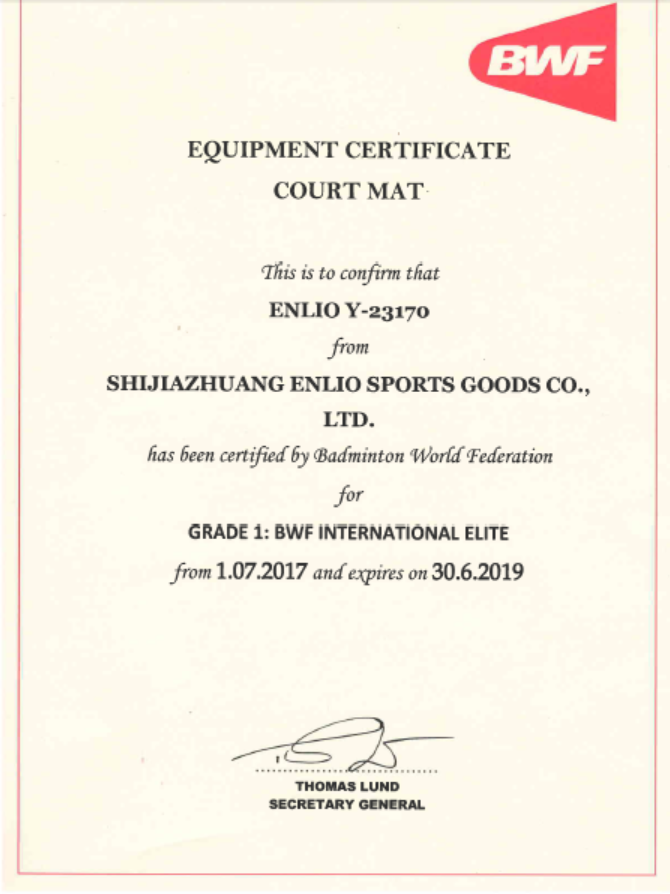
Privacy statement: Your privacy is very important to Us. Our company promises not to disclose your personal information to any external company with out your explicit permission.

WIDELY USED AND DIFFERENT BADMINTON FLOORING
Before choose badminton club constructing, which floor can be used, and what are the advantage and disadvantage. Today, i will brief introduce from my experiences.
Currently, there are at least below four kinds of badminton court mat, and except those there are some newly designed badminton court mats, such as zipper badminton court, which means it is locker system flooring, no need extra accessiory, just zipper those together, fast installation, easy handling. Build-in-line badminton flooring, which means all the lines are inside the flooring, no need to draw the lines, and low maintainance cost.

1) Synthetic Flooring
This surface is the most common surface. Used in majority of the top class Badminton venues and for professional matches, this surface comes with a wooden base on top of which synthetic mats are laid. These courts provide a good bounce and are anti-slippery. They also protect your knees from injuries and reduces the strain. The synthetic mats are either made up of PVC or PU.
PVC synthetic courts have good bounce and anti-slip properties and can be in the form of mats that can be easily laid and stored. These mats are separated into surface, middle and lower mats;the surface mats are durable and anti-slip, the middle mats add stability, while the lower mats absorb shock and provide bounce.
On this type of surface badminton shoes can produce good traction. Most tournament courts are wooden floors on which these kinds of mats are laid providing the advantages of both wood and PVU/PU courts. Therefore, this arrangement is the most widely preferred on the professional circuits.


2) Wooden surface
Apart from the synthetic surfaces, you will see most venues supporting the wooden courts. This surface provides a good set up to play with good shot making and bounce but sometimes it is bound to be slippery. When the wooden surface is spread with the players’ sweat or water, the surface might not be desirable to play.
The problems with wooden flooring
Wooden board courts, often seen in integrated sports halls, have relatively good shock absorption but are more slippery than synthetic courts. This means that the badminton player is constantly struggling for grip and traction while running around or generating ground reaction force for overhead smashes. If the court is damp or sweat falls on it, it becomes slippery and players can easily aquaplane.
Even though initial construction costs are significantly lower for wooden courts when compared to all other alternatives, maintenance costs are much higher compared to an equivalent synthetic one because of the fragile nature of wood.
November 07, 2024
October 31, 2024
July 03, 2023
July 03, 2023
Mail a questo fornitore
November 07, 2024
October 31, 2024
July 03, 2023
July 03, 2023
October 19, 2019
July 07, 2018

Privacy statement: Your privacy is very important to Us. Our company promises not to disclose your personal information to any external company with out your explicit permission.

Fill in more information so that we can get in touch with you faster
Privacy statement: Your privacy is very important to Us. Our company promises not to disclose your personal information to any external company with out your explicit permission.